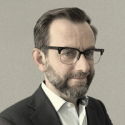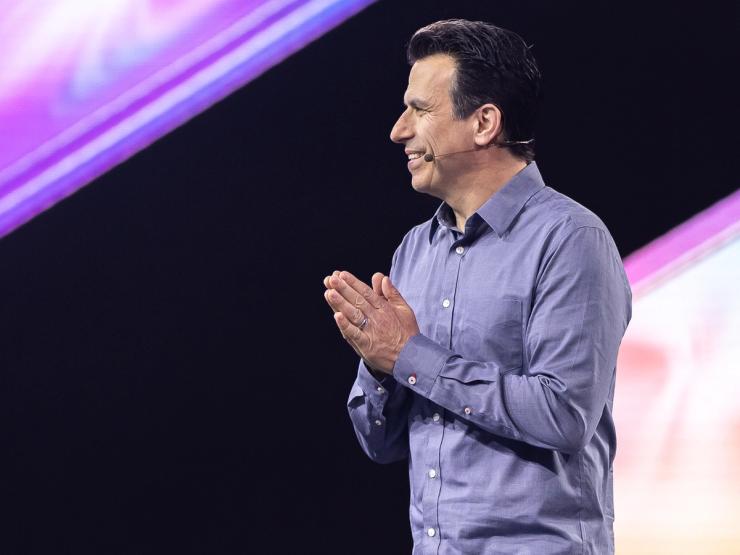The Signal Interview
Twice in the past two years, Andrew Anagnost has found himself under siege from the same activist investor.
Starboard Value disclosed a roughly $500 million stake in Autodesk last year, after the $67 billion design software company revealed it had conducted an internal investigation into its accounting practices. In addition to the familiar activist calls for cost cuts and stock buybacks, Jeff Smith’s hedge fund urged Autodesk’s board to reassess Anagnost’s position as CEO.
Starboard’s first salvo seemed to have fizzled by the time Autodesk announced two new independent directors last December. But the feared investor returned this year, threatening a proxy fight to put three of its nominees on the company’s board. The two sides settled in April, agreeing to “ongoing collaboration” after Autodesk appointed another two new directors — neither of whom was a Starboard representative — and cut about 1,350 jobs, or 9% of its workforce. The company’s stock has outperformed its peers over the past year.
Asked what lessons he learned from the high-profile standoff, Anagnost says that a CEO’s first response when an activist appears on their shareholder register should not be, “How can I get rid of them?” Instead, he says, the question should be, “What are they saying that’s true and what are they saying that’s false?”
Most people “go immediately to the false and forget the true,” he says, but by doing so, they risk missing a signal that’s being sent by the investment community. Even if a company believes that three out of four things on an activist’s list of grievances are false, he says, “it’s the thing that is true that the investment community will anchor on.”
Anagnost found common ground with Starboard on the argument that Autodesk’s profit margins could be improved. What mattered then was uniting his board to acknowledge that truth, push back against “the fallacies,” and establish “a bright line about what was acceptable for us and what wasn’t.”
That resistance was necessary, he says, because of the mismatch between his role and that of an investor like Starboard. “Most activists don’t care about the long-term success of the company,” he says. “I know they’ll say they do. And I applaud activists that solve problems and help companies move forward from tough situations. But my job is to think about the next five years of Autodesk, not the next two. And you have to strike that balance.”
Killing some flowers
That argument has echoes of the case Anagnost made to shareholders when he became CEO in 2017. His predecessor, Carl Bass, had stepped down after resolving another activist investor’s campaign, but Autodesk’s revenues were declining, and Wall Street was impatient about the company’s transition from selling software licenses to offering subscription services delivered through the cloud.
To get the investment community to “calm down” about a strategy he expected to pay off over the long term, Anagnost recalls, he had to pledge significant profit growth in the near term. Part of delivering on that promise was an overhaul of how Autodesk thought about research and development.
Anagnost inherited a “let a thousand flowers bloom” approach to R&D, he recalls. The advantage of running so many different experiments is that three or four of them are likely to be hits, he says, but it’s an expensive and inefficient way to “find the future” if you don’t have the discipline to kill failing projects early — “and, let’s face it, most people don’t have the discipline to kill the projects.”
Anagnost ended many of the experiments he inherited, and says he made some mistakes in the process. But Autodesk now makes fewer bets, and structures them around Anagnost’s suppositions on what the future might look like, rather than assuming that the future is unknowable.
“If you don’t have a guess on the future, then where are you going?” he asks, adding that you also need to be ready to adjust “as the world changes and you find out your guess is wrong.”
As artificial intelligence quickens the pace of change, he is allowing Autodesk to place a few more bets on what the future might look like, but ensuring that they are guided by his educated guesses. His message, he says, is: “Let’s do a few things and do them well, and let’s make sure that innovation comes from the bottom up, but direction tension comes from the top down in a balanced way.”
The politics of a ‘design and make’ future
Anagnost has positioned Autodesk to focus on serving a “design and make” workforce in architecture, engineering, construction, and manufacturing — jobs that defy old “blue-collar” and “white-collar” definitions, combining technical fluency and creative execution. Its software powers robots, was used in the reconstruction of Notre Dame in Paris, and is helping design venues for the 2028 Olympic Games in Los Angeles.
One of Anagnost’s bets on the future is that reshoring will continue to reshape global supply chains in ways that create more demand for Autodesk’s products. In the short term, though, President Donald Trump’s tariff-driven approach to bringing manufacturing back to the United States is causing uncertainty for Autodesk’s clients. “When the ball moves constantly and [they’re] trying to figure out where it’s going to go … people freeze investing, they slow down and they wait.”
Anagnost is dismissive of the idea that “putting on tariffs and waving a magic wand” will solve the challenge of reviving US manufacturing. “We are trying very hard to make sure that this administration understands that this problem is more complicated than they think it is,” he says. “You can’t just have Toyota or BMW or someone build a factory in the US, and suddenly you’re onshoring manufacturing. It doesn’t work that way. Where are all the parts coming from that go into that factory?”
Unusually for a senior US executive, Anagnost stated publicly that he voted for Kamala Harris, Trump’s Democratic opponent, in last year’s election. But he has been engaging bipartisan groups of lawmakers in Washington to advance his view on the future of American manufacturing, infrastructure, and jobs.
He wants to fill “the idea gap” between left and right, where good policies go to die, he says: “I don’t care who’s in power; we need more people speaking up about the things that fill the gap between the extremes that actually move the ball forward.”
Anagnost’s three leadership watchwords
CEOs need the courage to be decisive and take risks, Anagnost says. “You can’t just be paralyzed about who’s going to be mad about certain things. You’re always going to piss somebody off, and you’re always going to make a mistake. But are you going to be right 80% or more of the time? You’re killing it if you are. So you’ve got to have the courage to move.”
At the same time, he adds, “You have to do enough scholarship to know the implications of your choices.” He commissioned a wooden plaque for his office with the words “impulsiveness is not a virtue,” he says — not to paralyze him into inaction, but to remind him before making a decision to study what negative effects it may have, and how to mitigate them.
The third leadership trait he values is empathy, “because every decision you make as a leader has a positive impact on some constituency and a negative impact on another.” Putting yourself in the shoes of the people who will feel that negative impact “helps you bring those people along,” he says.
Notable
- Activist investors waged fewer campaigns in the first half of 2025 as tariffs, wars, and Trump’s unpredictable policies made them more cautious, a Barclays study found.
- Macroeconomic uncertainty hasn’t affected Autodesk in the early months of this year, but Anagnost told CNBC there could be “clouds” ahead.


